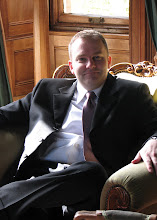Helaman showed us the Mayan buildings, carvings, paintings, and other aspects of their culture unearthed by archaeologists in recent years, then took us to the scriptures. While scholars have trouble understanding the Mayan calendar, Helaman pointed us to Levitucus and the Book of Mormon, showing that Mayan ancestors had access to the books of Moses and how the calendar they used was very similar to the one outlined for the Israelites in the Old Testament.
While scholars know that the Mayans were successful at using plants and herbs to fight off disease, it's often a wonder how such a primitive culture was able to fight off malaria that killed many of their invaders. The Book of Mormon explains how.
The design of the Mayan temples is also described in the Old Testament--many of the design elements of the Mayan buildings have symbolic similarities to those in Old Testament times, including the number of rooms, washing pools outside the temples, and the symbolism carved in the buildings.
 |
| This temple at Chichen Itza shares design principles with the Tabernacle of the Children of Israel and of Solomon's temple. |
Helaman drew connections between the Mayan gods and religious practices with the sources and explanations that can be found in the Book of Mormon. The Book of Mormon describes how the descendants of Lehi and Mulek used herbs and plants to fight off seasonal diseases, which archaeologists have found to be true.
The symbols and gods on temples are consistent with the history in the Book of Mormon, including an instance at Tulum with carvings of God the Father, God the Son, and God the Holy Ghost.
After centuries without prophetic guidance after the Nephites were destroyed, the need for a "broken heart" was perverted to include actual human sacrifice.
The big sport was called Pok Ta Pok. Teams would play, and after the game someone (I have heard both winners and losers) would be sacrificed. In later cultures this game would evolve into quidditch, but it was really a bummer for the sacrificed Mayans.
Helaman has given away many Books of Mormon to other tour guides to encourage them to read it to inform them of the context of many of the things they explain to tourists on their excursions. Only a few have. Without this missing piece, archaeology becomes just educated guesses. Having the actual history of the ancestors of the Mayans fills in a lot of the holes in the archaeological record.


No comments:
Post a Comment